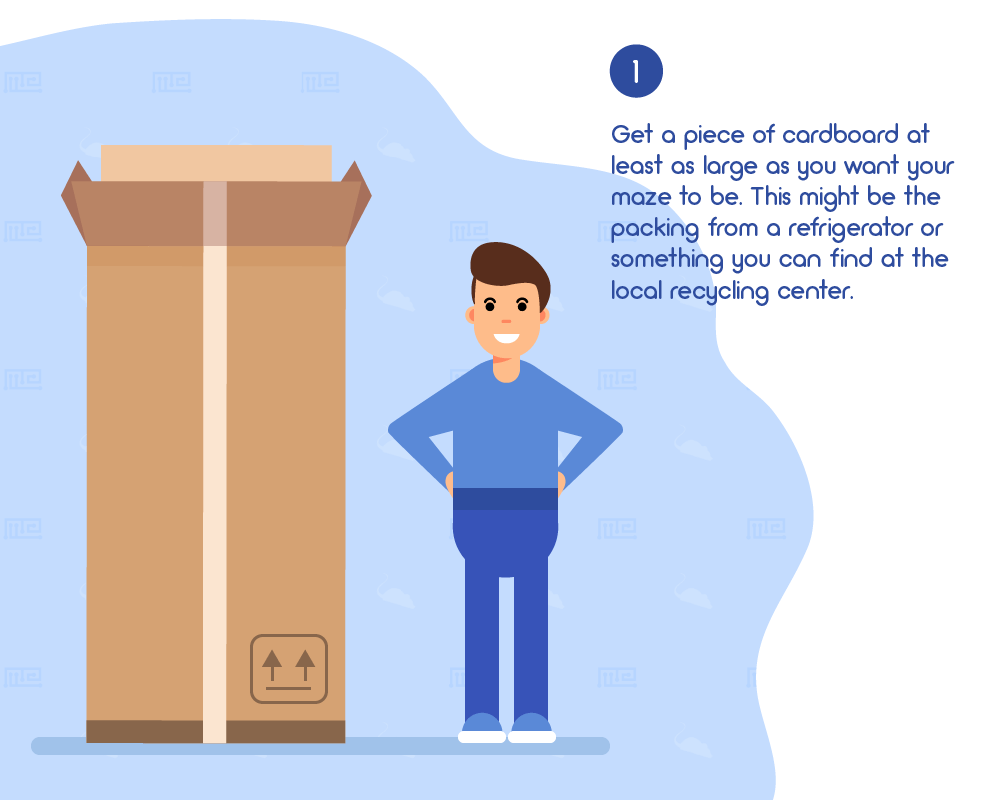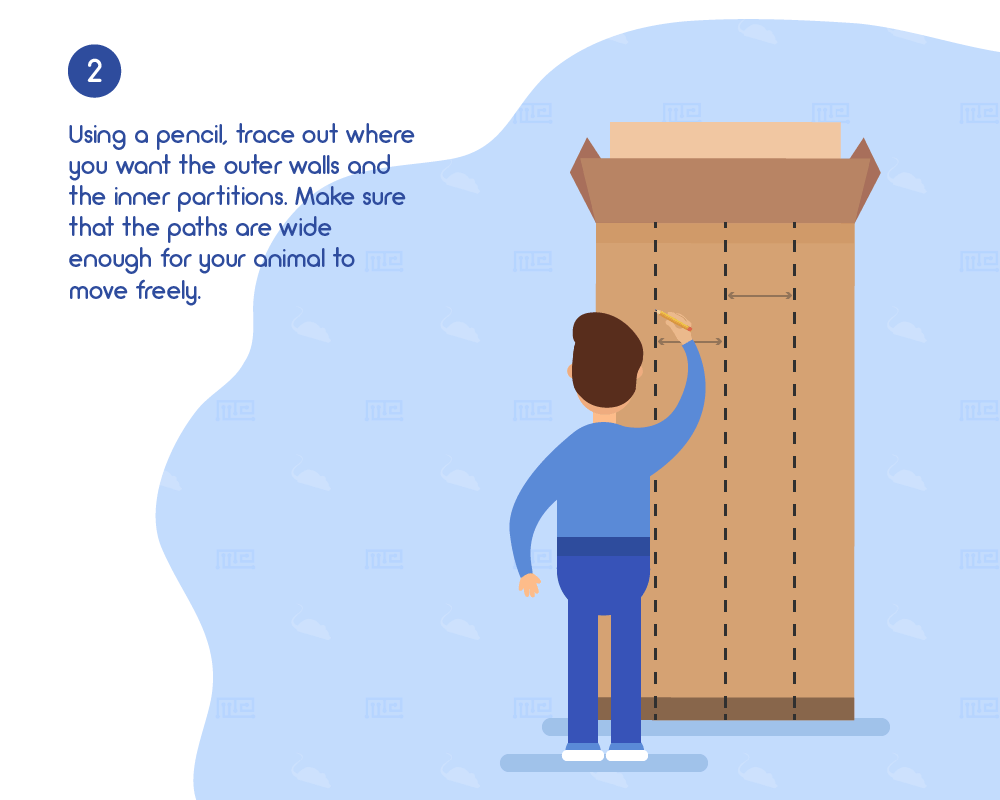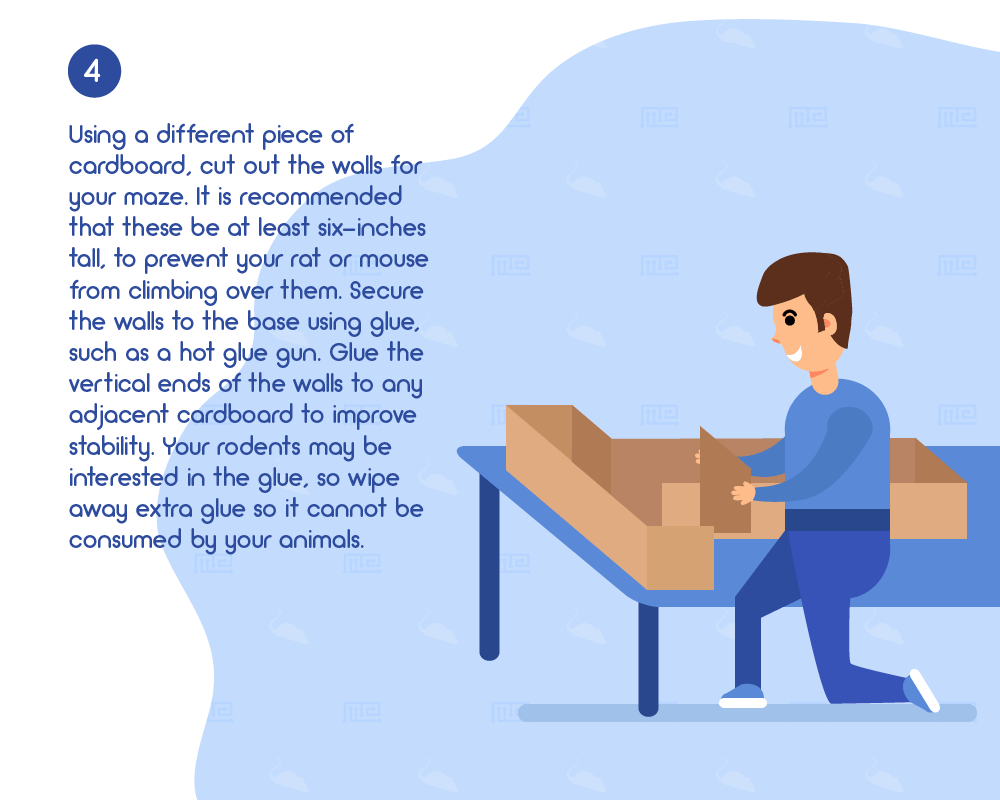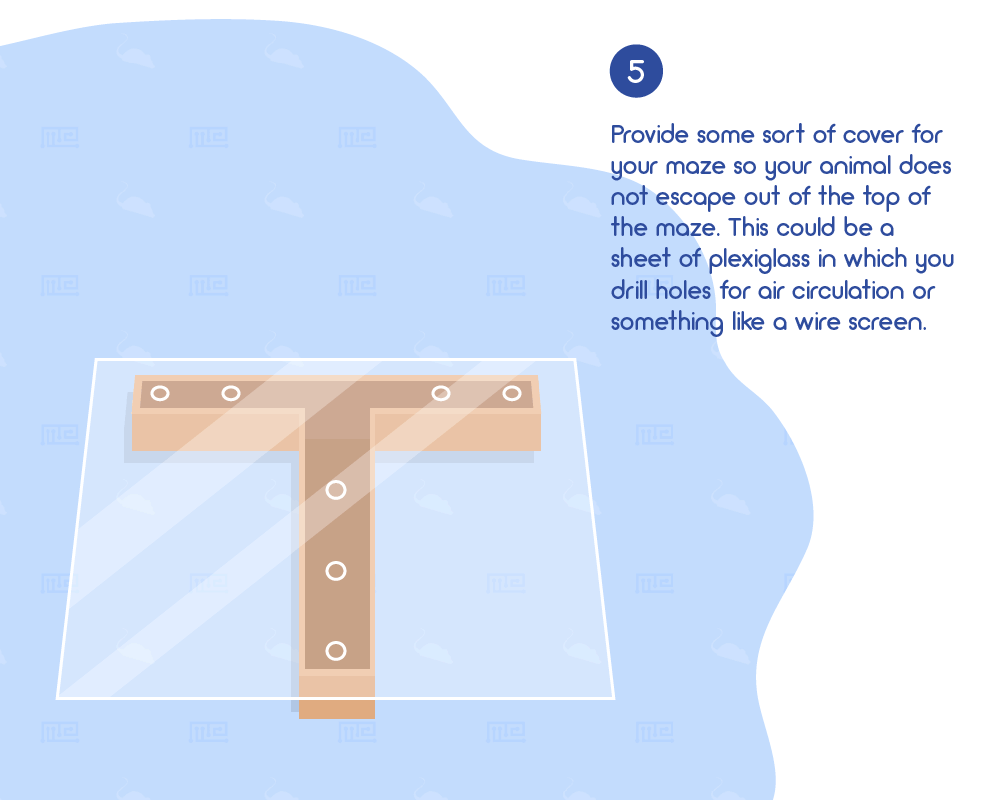Using Mazes to Understand Behavior
Mazes have been used for decades as a way to study rodent behavior, particularly learning and memory, navigation, and sensory cues. They have also been used in mice and rats to study disease models such as pain, Alzheimer’s disease, and drug addiction. The most common types of maze include the radial arm maze, the Y- or T-maze, or the open-field maze. The Morris water maze is also commonly used and can be made as a DIY rat maze, but that is not the focus of this blog. While many research studies have custom-designed mazes made of lexan or plastic or metal, there is no reason why you cannot design and build a perfectly functional maze out of material you have laying around or that looks like scrap. You can do this to entertain your rodents and enrich their environment or you can do this to collect publishable research data.
Donald Hebb is one of the fathers of learning and memory. He has given his name to the Hebbian synapse and the idea of Hebbian learning and his research and ideas underlie the idea of Long-Term Potentiation as a model of learning. He came up with the idea that neurons that fire together wire together from his studies of learning and memory in rats. During the course of his research career, he took his experimental rats home with him and allowed them to roam his house. Stories, most likely apocryphal, suggest his wife did not like this, but the rats thrived! Those rats that he took home experienced an enriched environment and used their evolved behaviors to explore this new environment. Compared with the rats that were left in the cages in the animal facility, the rats who went home to explore the enriched environment were better at solving problems and other cognitive tasks. This led directly to the idea that providing an enriched environment is beneficial for the animal and it takes advantage of the natural behaviors of the animal to produce more-realistic experimental results and gain a better understanding of rodent behavior. This understanding is then generalized to other species, including humans.
Building Your Own DIY Rat Maze: Initial Considerations
The first question you want to consider is what do you want to study? Depending on your research question, an open-field maze or radial arm maze or some other sort of maze might be most appropriate. Other blogs on this site describe different types of mazes, so you are encouraged to look through those options to decide which type of maze is best for your research question. Alternatively, if you just want to build a maze to enrich your animal’s environment, be as creative as you want. Build a maze and incorporate places for your rat to explore, such as piles of crumpled up paper and dark corners. Whatever your goal, the initial design is up to you.
Once you have a maze in mind, you want to decide how durable you want the maze to be. A DIY rat maze made of cardboard is quick and cheap to build, but it may not last very long. Your rat may rear up and knock down a wall or they may chew through the cardboard. You will find them very creative! But, you have the advantage of speed and flexibility. Here, cardboard offers a great advantage if you want to collect some initial data before investing in a custom-built maze. If you want a maze that will be a little more durable, you can construct it out of wood. Here, you would use glue and screws and nails instead of tape to assemble your maze, but it will be a more durable structure. Both of these offer good options to collect pilot data for a grant application or when you are moving into a new area of research. Assuming the funding works out, you can budget for a more durable and high-tech maze.
Now you have your idea for a maze and you’ve decided how durable you want your structure to be. It is time to start making your maze. For simplicity, we are going to talk about making your maze out of cardboard, but remember that you can use wood as well.
Building Your Own DIY Rat Maze: Construction
- Using a different piece of cardboard, cut out the walls for your maze. It is recommended that these be at least six inches tall, to prevent your rat or mouse from climbing over them. Secure the walls to the base using glue, such as a hot glue gun. Glue the vertical ends of the walls to any adjacent cardboard to improve stability. Your rodents may be interested in the glue, so wipe away extra glue so it cannot be consumed by your animals.
Running Your Experiment
Using your newly-built DIY rat maze, go ahead and run the experiment you planned at the beginning. Do not forget to add food as a reward, or whatever the outcome or reward is, based on the experiment you designed. Given the ease and low cost of building such a maze out of cardboard, the only limitations here are really your imagination and experimental goals. It provides a great way to determine that your maze will produce the type of data you want to collect before investing in a professional maze.
Downsides of a Cardboard Maze
While cardboard is a quick and cost-effective way to prototype your research, there are downsides of using a do-it-yourself rat maze.
- Strength and Stability – The first weakness of a cardboard maze is that the flexibility of using cardboard also means that the maze will not have the stability of a plexiglass maze that has been built and assembled explicitly to withstand regular use by rats or mice. With cardboard, the rat may chew the maze or may cause the walls to collapse if they rear up and put weight on them.
- Cleaning – A second drawback is that the cardboard maze will be difficult to clean. The standard experimental procedure involves wiping down the maze with alcohol between different experimental trials to eliminate any odor cues. This also removes any feces or urine left by the animals. With a cardboard maze, such cleanup is not possible and stains and odors left by urine or feces cannot be removed and may provide cues for animals who use the maze later.
- Data Collection – A third major shortcoming of a cardboard maze is data recording. Professional mazes are often built in such a way that video recordings of the animal’s progress can be made from above or below the maze, enabling detailed analysis of the behaviors of the animal in the maze. A cardboard maze will not be transparent and may not provide a strong contrast between the animal and the brown cardboard, making data analysis more challenging and time consuming.
For these reasons, while a do-it-yourself rat maze does provide an effective starting point for early, proof-of-concept pilot studies, it is often a good idea to budget for a professional-quality maze as the research moves forward.





